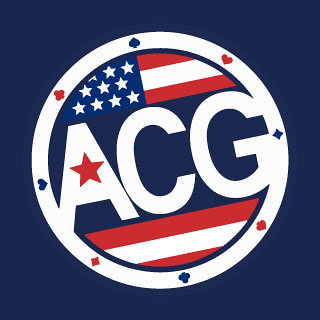The Internet is an integral part of our everyday lives. It has become the primary medium for us to conduct our business, communicate with our family and friends, and access information. Because of this, Internet service providers (ISPs) have entered the market to provide the fastest and most reliable Internet connections.
There are two different means of internet connection that are available to the average home user: DSL and cable modem. Which is better? The answer depends on what you’re using the internet for. Let’s take a look at the ins and outs of DSL. If you’re looking to buy a paper online, for example, you may find that DSL offers the more reliable connection you need for a smooth transaction.
What is DSL?
DSL, or Digital Subscriber Line, is a form of high-speed internet access for consumers. It is a type of connection technology that involves a set-up connecting the user's computer to an Internet service provider (ISP) via the customer's telephone line. A DSL modem is used to connect to the internet. It does allow for greater speeds than traditional dial-up connections.
What is Cable Internet?
Cable internet is the term used to describe broadband internet over a cable network. Broadband internet uses your cable connection to bring you online. Depending on the speed of your connection, your network will be able to handle different applications and websites. This type of internet service is generally considered the fastest.
What are the Differences Between DSL and Cable Internet?
Availability
Depending on the availability of cable TV or phone service in your area, both internet connections are mostly available across the country. DSL is available in most areas and caters to more rural or suburban areas. DSL is available to 84% of the US population. As cable TV infrastructure is in place for much of the nation, cable internet is readily accessible. Cable internet is open to more than 88 percent of the U.S. population. In terms of availability, both are relatively accessible.
Speed
Internet speed is a key consideration when selecting your ISP. We all know how frustrating it is to wait for a page to load or a download to complete. This has become especially true with high-def video and streaming music services. Both DSL and cable internet are capable of providing high speeds, but DSL uses the traditional phone line, while cable uses the cable wiring in your home or office. If you have many devices connected to your Internet at the same time, you may find cable internet can provide faster speed.
Bandwidth
Bandwidth plays an important role in deciding which plan is right for you. DSL and cable both offer high-speed internet access but DSL bandwidth is usually dedicated, whereas bandwidth on most cable Internet connections is shared with an entire neighborhood - hence during peak periods (ie when a lot of households are on the internet), cable internet can tend to be slower.
Quality of Connection
The connection quality that you will get depends on several factors. For DSL, Speed and efficiency depend on proximity to your Internet service provider. The further you are, the more the reduction in the quality of the connection. You may want to upgrade to cable internet if you want to eliminate this problem and enjoy a faster and more efficient connection quality. It is also noteworthy that like the telephone service, DSL connection can be disrupted by the weather.
Usage
For the average residential user who just wants access to the internet for a desktop and a laptop, DSL is adequate. For people who use streaming media or have multiple devices connected to their home network at the same time (such as tablets, smartphones, game consoles, or smart TVs) then cable internet can be a better choice.
Pricing and Subscription Rates
A lot of times, people are confused about the pricing because DSL and cable Internet offers different pricing plans. Cable Internet is generally more expensive than DSL Internet. This is because DSL is one of the most moderately priced types of Internet Service Providers while still providing relatively quick downloading and streaming speeds. DSL plans start between $20 and $45 a month. On the other hand, most cable plans range between $55 and $60 a month, give or take. Some DSL providers also provide affordable fixed lifetime subscription plans.
Latency
Cable internet provides a high latency rate while DSL connections provide a low latency rate. DSL will be slower in handling video calls, streaming videos online, and playing games.
Tips on choosing an Internet provider
- Consult your neighbors: Ask people in your area about the network providers they patronize.
- Keep an eye on data caps: Surpassing the monthly usage download limit of your plan results in expensive overage fees.
- If you can, buy your router/modem: Many vendors charge extra to hire a combination modem/router and you might be able to save more bucks (and probably increase your speed and efficiency) with a newer, better router you own.
- Work your way to a lower bill: If there are several providers in your neighborhood, you might be able to use a different service provider to lower the price of your present monthly plan.
- Look out for price spikes after special offers expire: Most companies offer promotional monthly rates for the first twelve months; the amount you pay afterward is the actual price of your package.
DSL or Cable Internet - Which is Right for You?
DSL internet is probably the best choice if any of the following applies to you:
- You're using the internet to download music, movies, online shopping, and browsing.
- Your households have three2 - 3 Internet users.
- You rarely play online multiplayer games.
- You want a fixed price for an internet connection that doesn't go up after the discount time.
Cable internet is an excellent choice for you if several of the following are used:
- You have several devices streaming in your home at the same time.
- You also backup huge files to the cloud.
- There's a lot of video gaming going on in your building.
- You've planned for a higher-priced broadband service that should go up after the introductory rate.
With so many different Internet providers, it can be difficult to see an advantage with one over the other. Although it may seem odd at first glance, finding the best Internet connection can save you time and money while providing faster speeds and more bandwidth usage. Ultimately, it will come down to your needs at the particular period.






